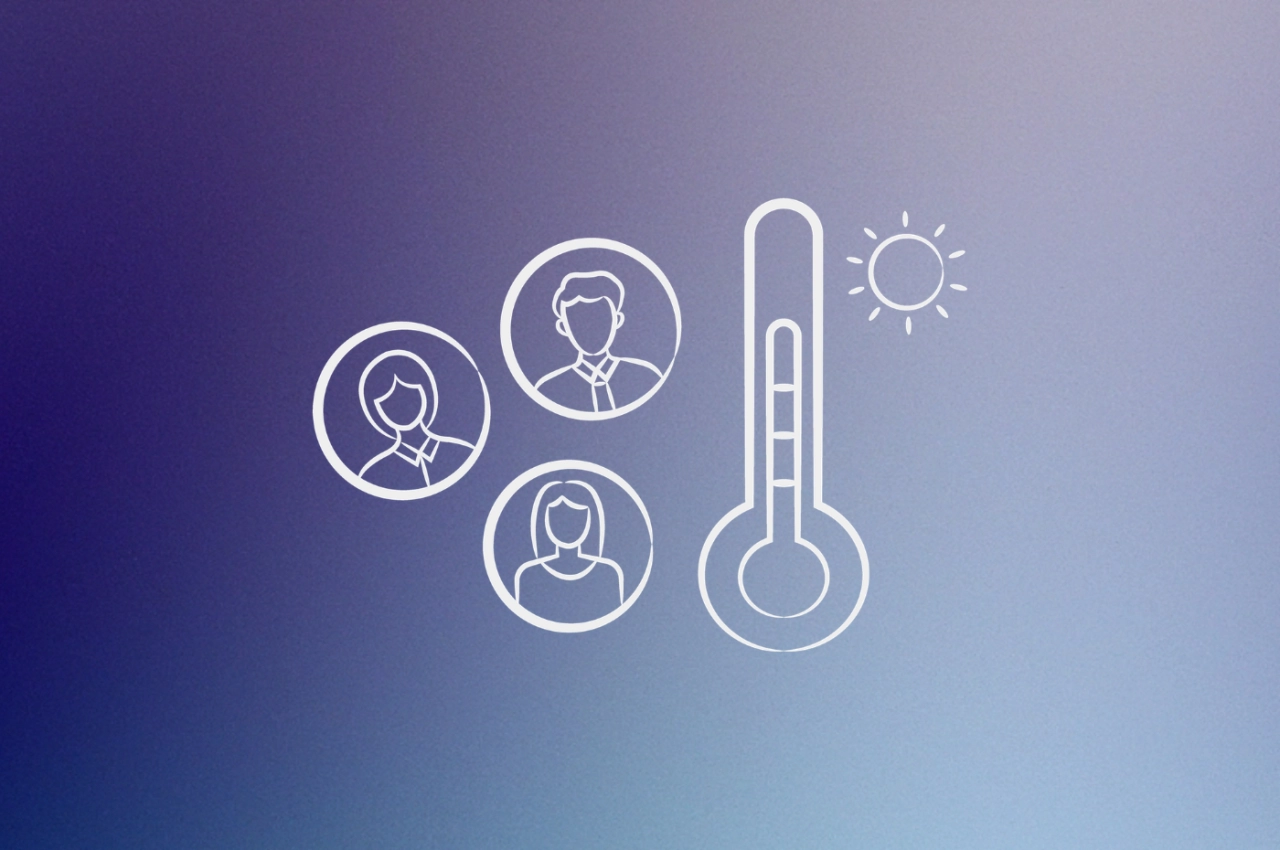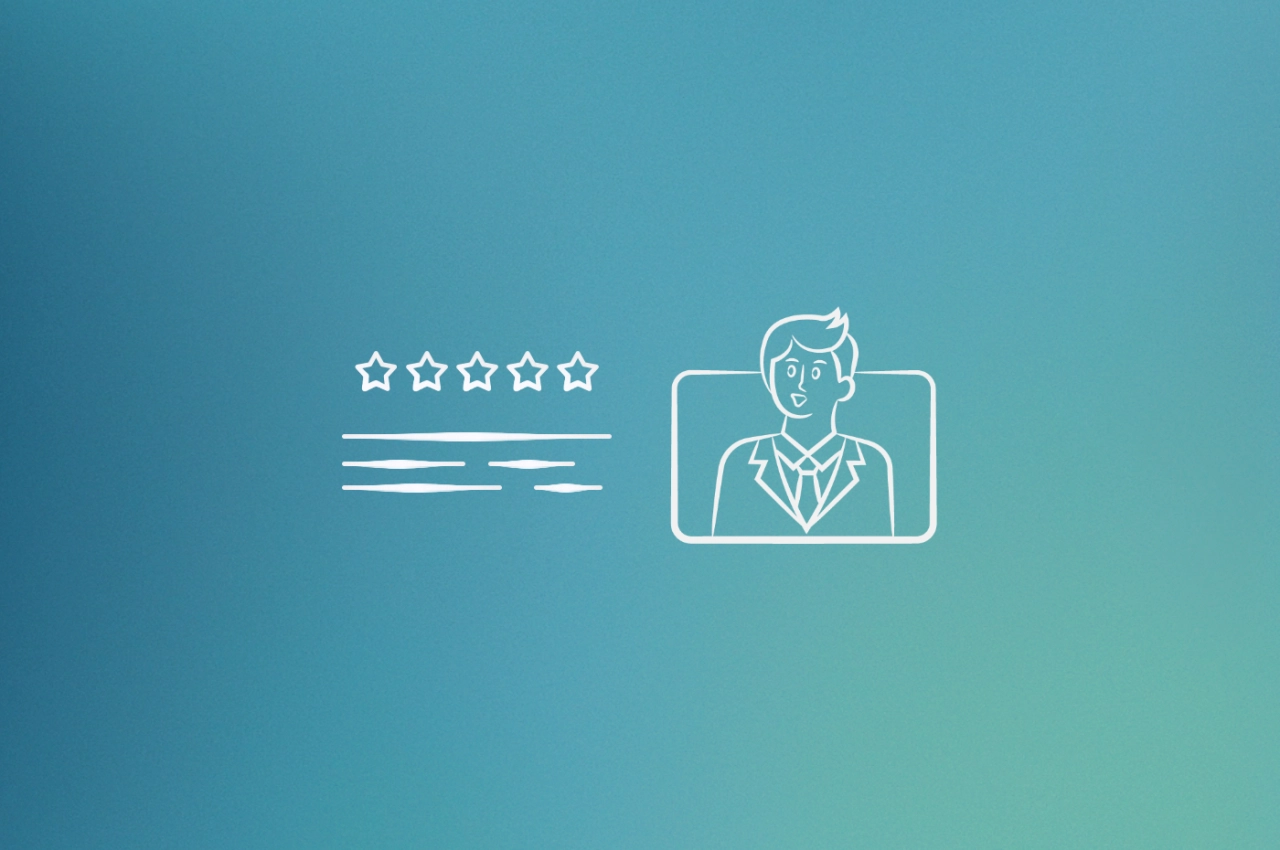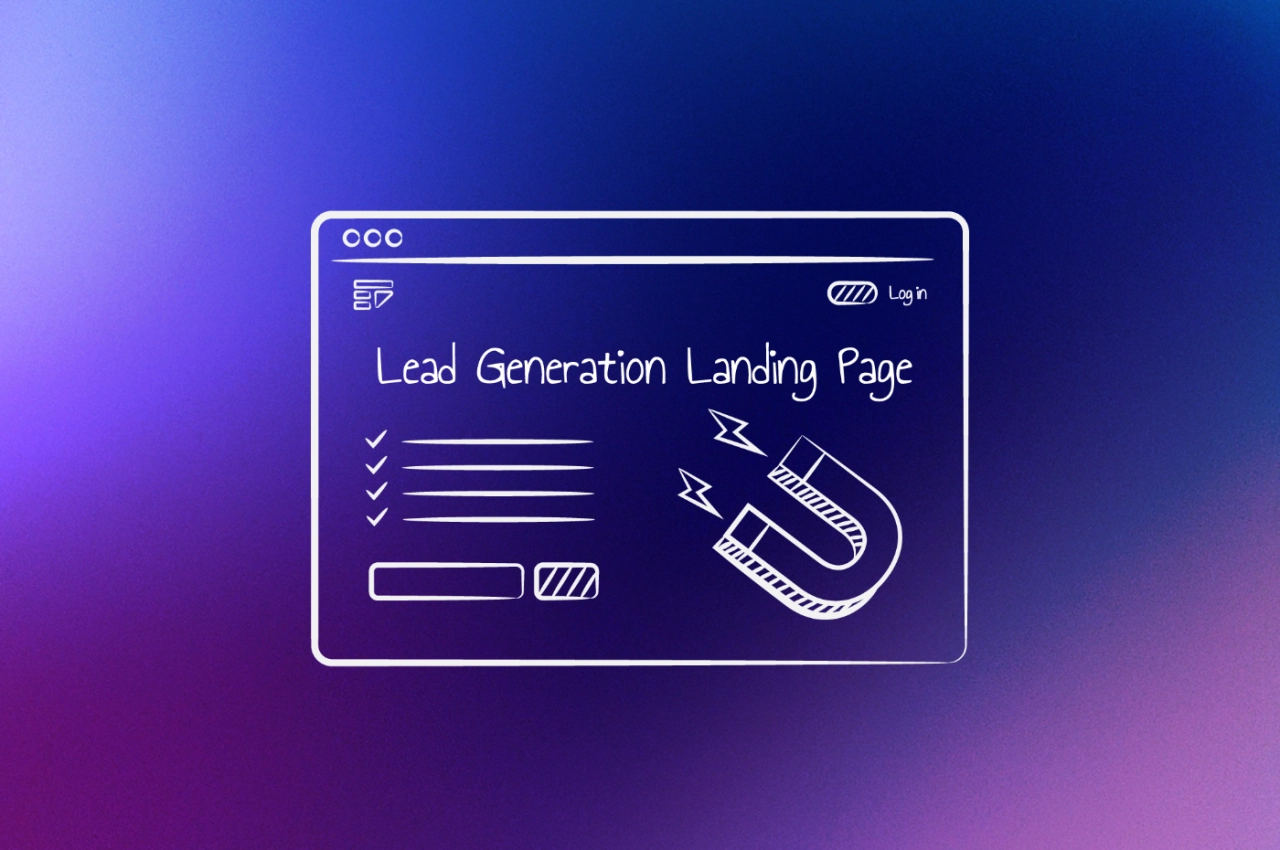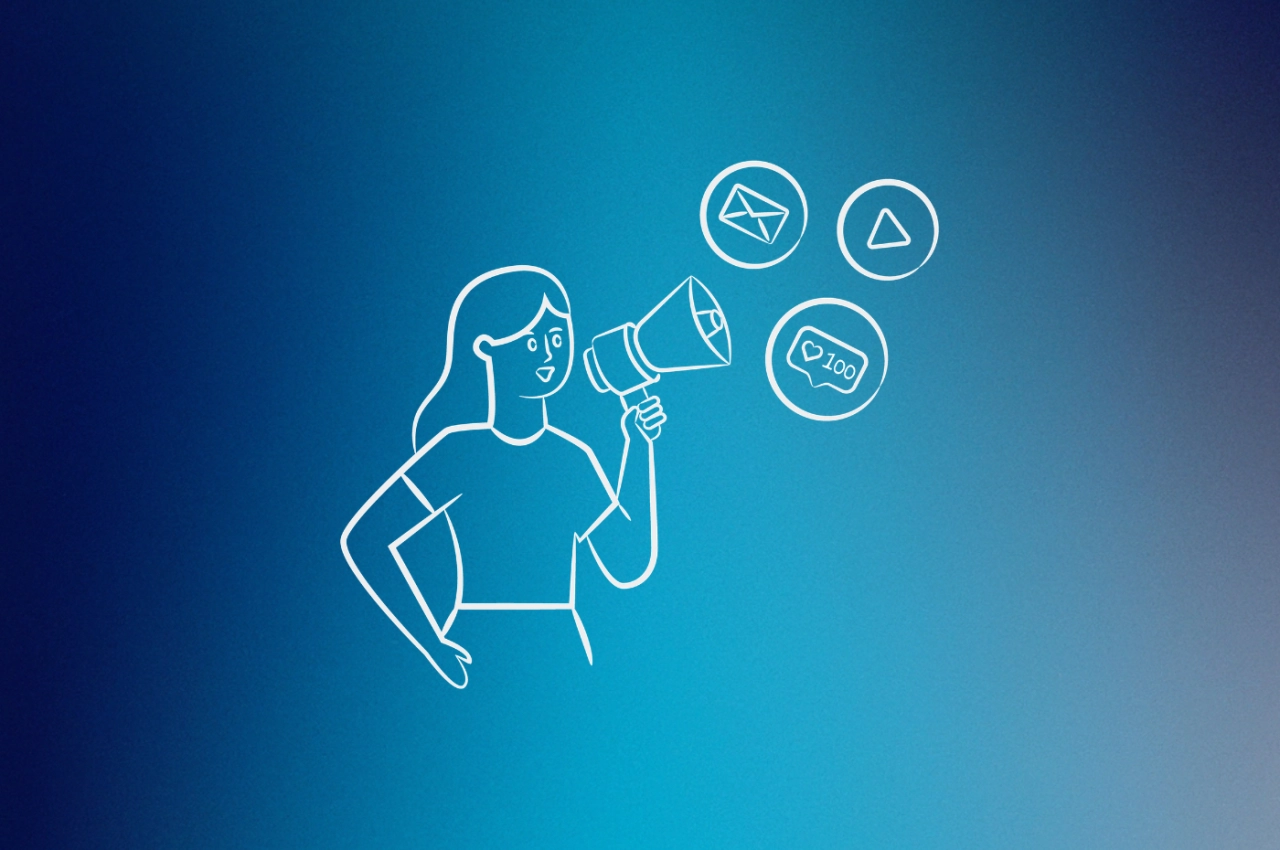Gone are the days when qualified lead generation relied on expensive dinners and a flair for sneaking into your target audience’s network. Don Draper and Roger Sterling’s way are but a memory in most cases, and they’ve been replaced buy technology, namely lead generation software.
With automation tools helping you find potential clients almost on autopilot, it’s hard to imagine B2B lead generation and lead nurturing will ever be the same as it was just a couple of decades ago.
The bad news is that sales and marketing automation can feel like a confusing affair when you’re drowning in an ocean of lead generation platforms, unable to know which one’s worth your attention for creating and converting sales leads.
If you’re feeling a bit lost trying to pick a lead generation system, I get it—and I’m here to help. Read on and learn more about the top 14 most powerful and popular lead management tools (and how to make sure you choose the right one).
What is lead generation software?
Lead generation software is a technology used to attract prospective customers and convert them into leads. This software helps businesses capture more leads, track lead data, nurture leads, score leads, and measure ROI from marketing campaigns.
Lead generation software allows you to automate the process of generating new leads so that you can focus on other aspects of your business. With automated lead-generation processes in place, marketers can focus on creating effective, personalized campaigns that are tailored to the needs of their potential customer.
How does lead generation software work?
As you will see later on in this article, there are many types of lead generation software. As a general rule, their main goal is to help marketing and sales teams attract, qualify, and convert leads. Most often, these tools are based on data collection and segmentation, to enable you to target your prospects better and create more personalized campaigns.
Lead generation software collects data from various sources, including web-forms, website analytics, emails, social media, and more. It then uses this data to create a database of leads and segment them based on their interests and needs. This process is often called lead scoring, which allows marketers to prioritize leads based on their characteristics.
Once the database has been created and segmented, it can serve different teams in the company to create targeted campaigns and messaging, track the progress of each lead, and measure the effectiveness of their efforts.
Top 14 lead generations tools
Not sure which tool to use for B2B lead generation? Here are some of the most popular lead generation software options on the market, in different categories.
Customer relationship management tools
Customer relationship management tools are essential for every business dealing with customer data. By seamlessly integrating with CDPs and lead generation tools, CRM software can help map an entire customer journey from when a lead is acquired to when they become loyal customers.
Salesforce
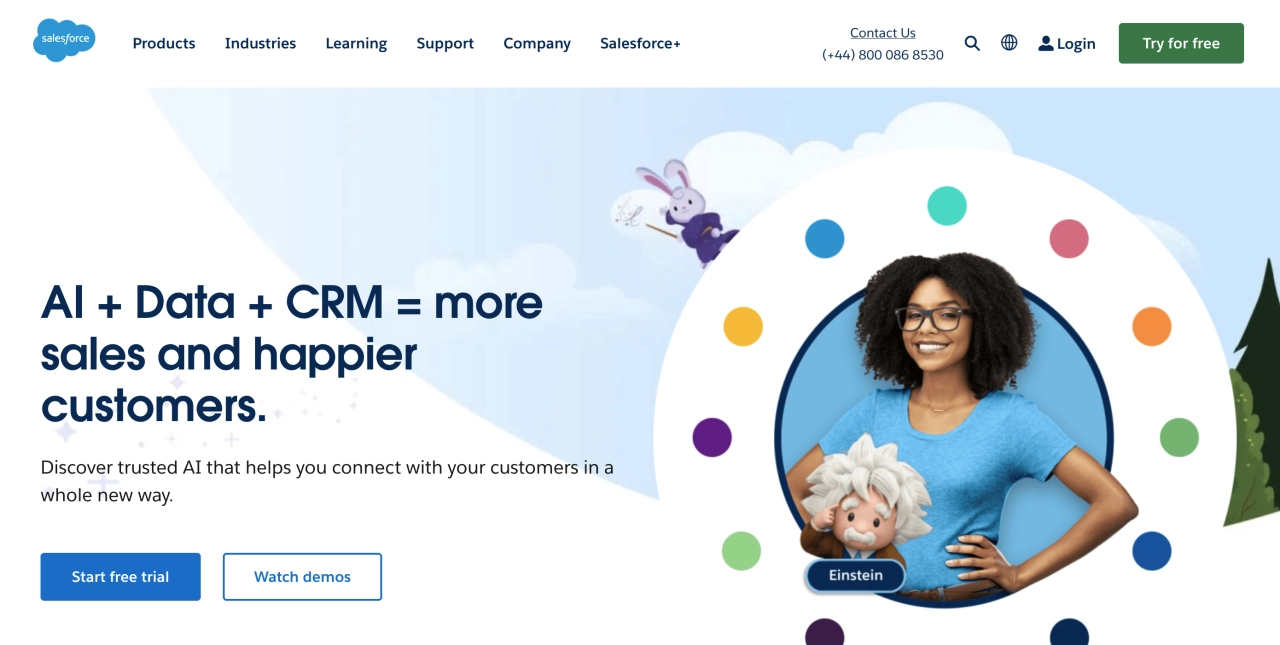
Salesforce is one of the most popular CRM tools on the market—and for a good reason. It provides a comprehensive suite of solutions to help automate and optimize the lead generation process, including automated workflows that can be tailored to fit specific sales processes. The platform also offers AI-driven insights that can help with lead segmentation, personalization, and powerful reporting features.
SPP

Service Provider Pro is perfect for agencies that want to manage clients, orders, and even referral campaigns—all in a clean, efficient, and transparent way. Our platform helps you track customer data, automate customer communications across multiple channels, and provide great customer service by ensuring everyone in your agency has access to the same source of truth.
Sales tools
Sales tools are specifically designed to help sales teams generate new leads and nurture them through the pipeline. They provide features like contact management, email automation, intelligent insights, lead scoring, and more.
CIENCE GO Data
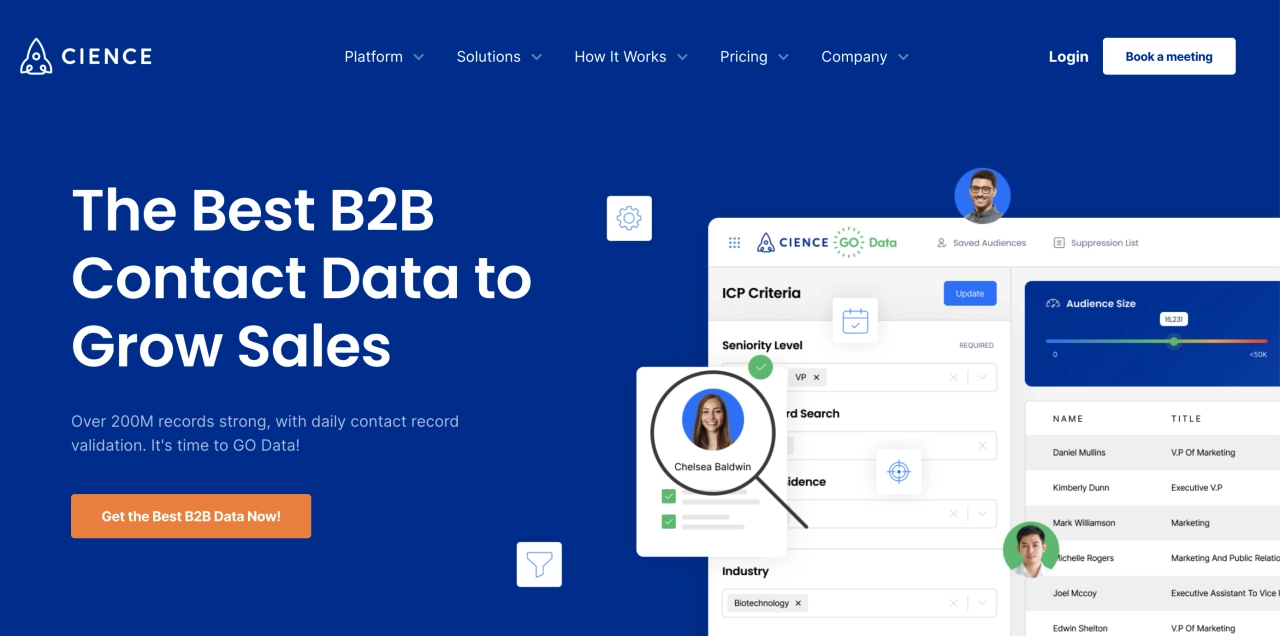
CIENCE GO Data offers a database with more than 300 million records of leads. The leads stem from all industries and have been validated by CIENCE professionals in order to make it easy for you to find business contacts that match your ideal customer profile (ICP).
In order to validate millions of records, the sales intelligence platform validates them via regular outbound outreach in combination with multiple other data points, such as:
demographic and technographic records
company information
email addresses
phone numbers
With access to highly accurate data, your sales and marketing teams can build an effective strategy, customized to your audience’s needs with the help of GO Data.
Onsite lead generation
Onsite lead generation tools are usually web-based and used to collect visitor data from your website. They provide features like on-page pop-ups, lead capture forms, surveys, quizzes, and polls—all meant to capture lead contact information so contacts can be added to a nurturing program.
OptinMonster
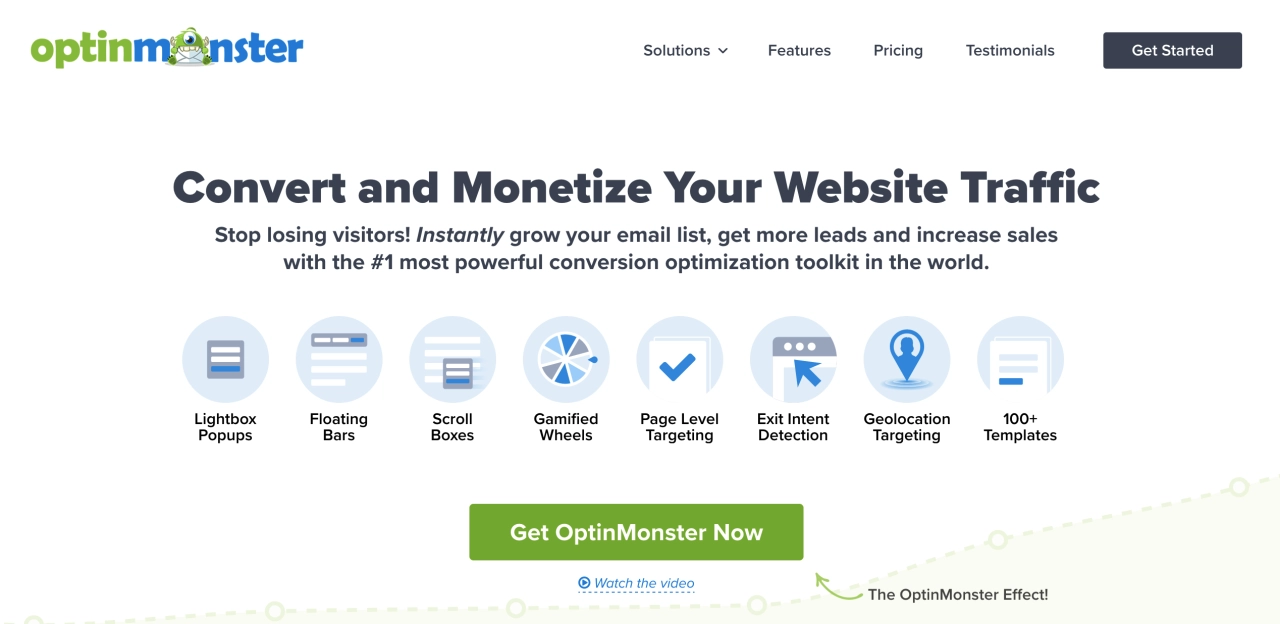
OptinMonster is a leading onsite lead generation software with a variety of features, such as exit intent technology that helps capture visitor data when they attempt to leave the page. Used intelligently, popups like these can time on site and conversion rates—both in terms of micro-conversions (like newsletter signups) and in terms of macro-conversions (like purchases or product signups, for example).
ConvertFlow
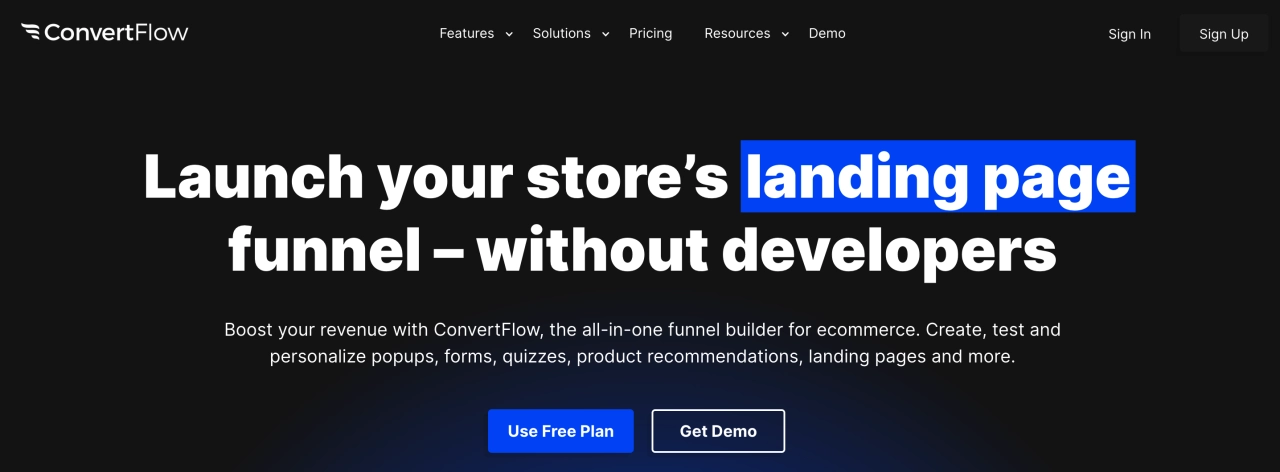
ConvertFlow tries to get your attention by going beyond website popups and instead to create conversations with your leads. They allow you to create popups, sticky bars, quizzes, forms, and other types of interactive content, to actively engage with your leads and build relationships that lead to conversions.
Email marketing platforms
Email marketing platforms are not always seen as lead generation tools, but they can definitely act as such. An email software can be used to capture new subscribers, segment them based on their interests and previous interactions with you, and send personalized messages that foster relationships.
Klaviyo
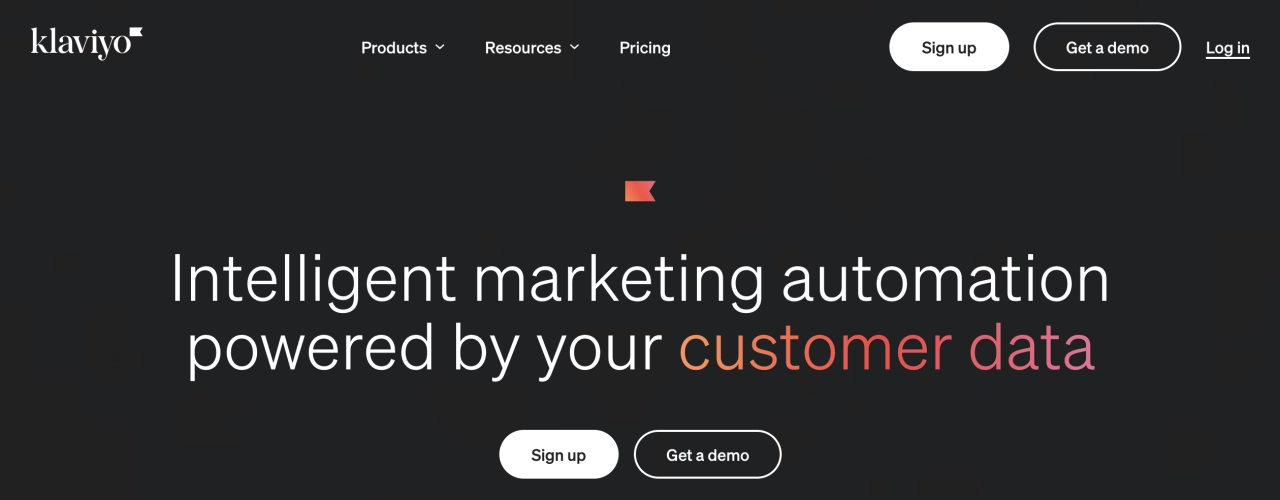
Klaviyo is known as one of the best email marketing tools for eCommerce businesses. They provide you with a wide range of advanced segmentation features, so you can target the right prospects with the perfect message. Also, Klaviyo allows you to connect Facebook data with their email lists to create omnichannel campaigns that help with retargeting and improving conversion rates.
Klaviyo also provides their customers with advanced SMS marketing features so that you can reach out to your leads in more ways than one.
For instance, order confirmation, shipping, and time-sensitive SMS messages can all increase conversion rates and build loyalty with your customers.
Mailchimp

Arguably one of the most well-known email marketing tool in the world, the main forte of MailChimp is its ease of use. Built for businesses in every industry and size range, this email software allows you to quickly and easily create beautiful email designs and email campaigns. You can also personalize messages using their segmentation features, and monitor engagement in real-time.
Communication tools
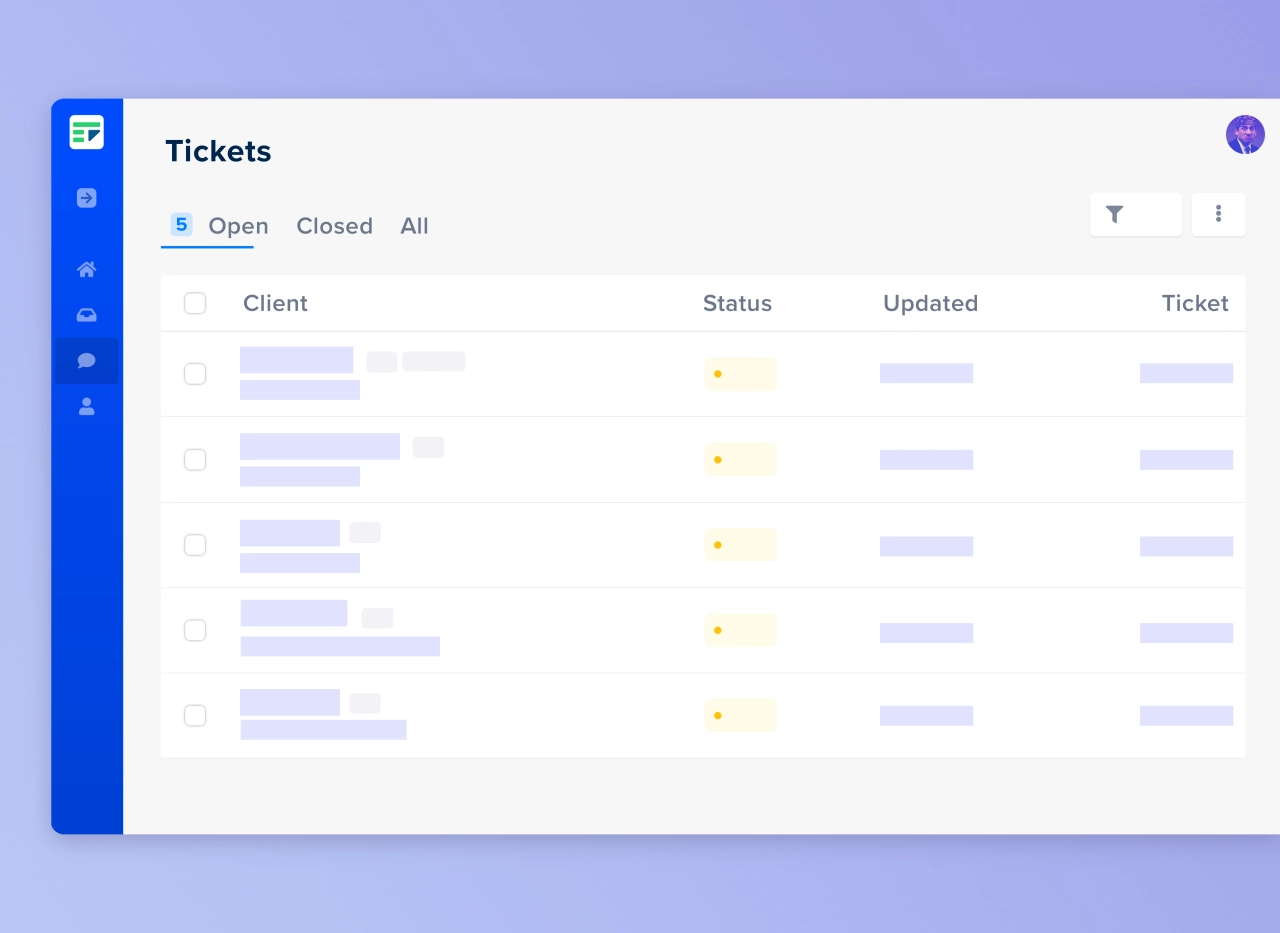
Communicate with leads and clients through our helpdesk.
Communication tools are designed to help you keep in touch with your leads and prospects and foster relationships. They provide features like chatbots, live chat, and ticketing systems that allow you to interact with customers in a personalized and timely manner.
Intercom

Intercom is a communication platform designed to help businesses of all sizes, from startups to large enterprises, connect with their customers on a more personal level. Its Live Chat feature allows you to interact with your leads and prospects in real-time, while its AI-powered chatbot helps automate conversations where needed.
Zendesk
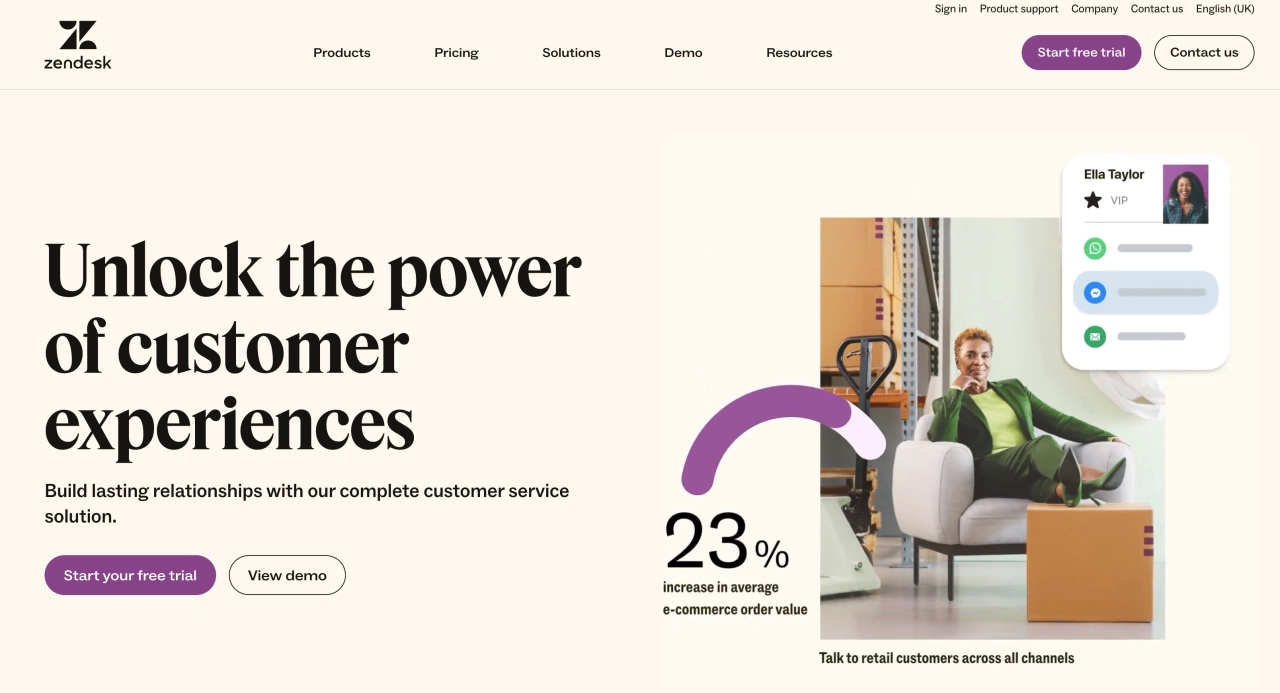
Zendesk is one of the leading customer service platforms in the world. It provides features like a ticketing system, knowledge base, and live chat. The platform also allows customers to contact you via social media channels or email—so you can reach out to them whenever they need help and build trust with your brand.
Email address finders
Email address finding tools are meant to help you find your prospects and leads’ email addresses, so you can reach out to them with personalized messages. Many of these tools use AI-driven algorithms that help make sure you get accurate results, without wasting time on manual research.
Hunter.io
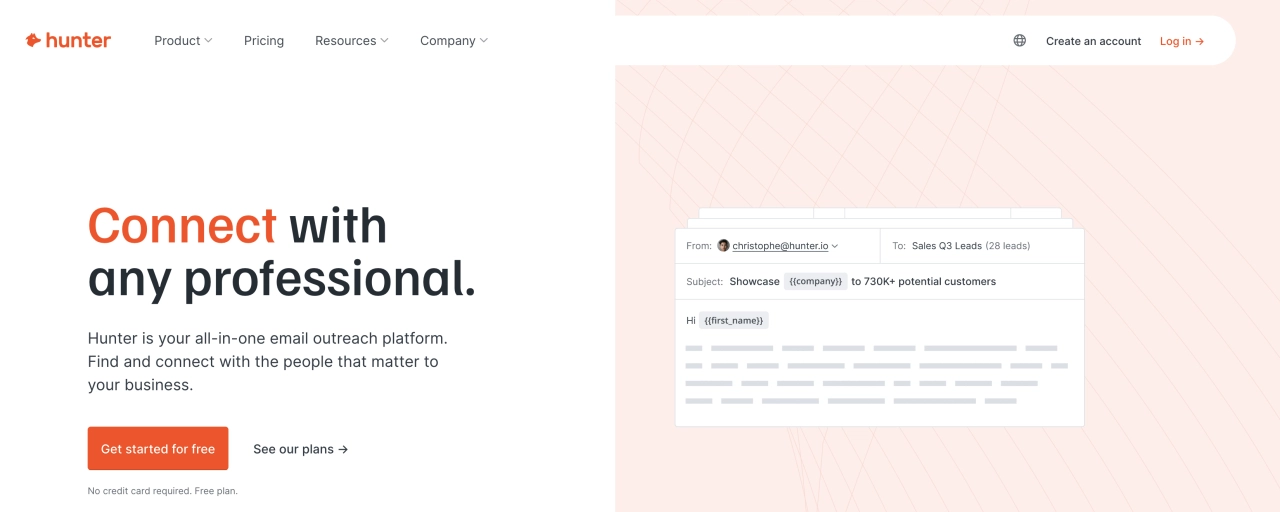
Hunter.io is a popular email address-finding tool that comes with a lot of integrated features. It doesn’t just help you find your potential customers’ email address, but also verify these contact details and send cold email campaigns.
Hunter also provides more advanced segmentation features and templates that help you increase your response rates.
RocketReach
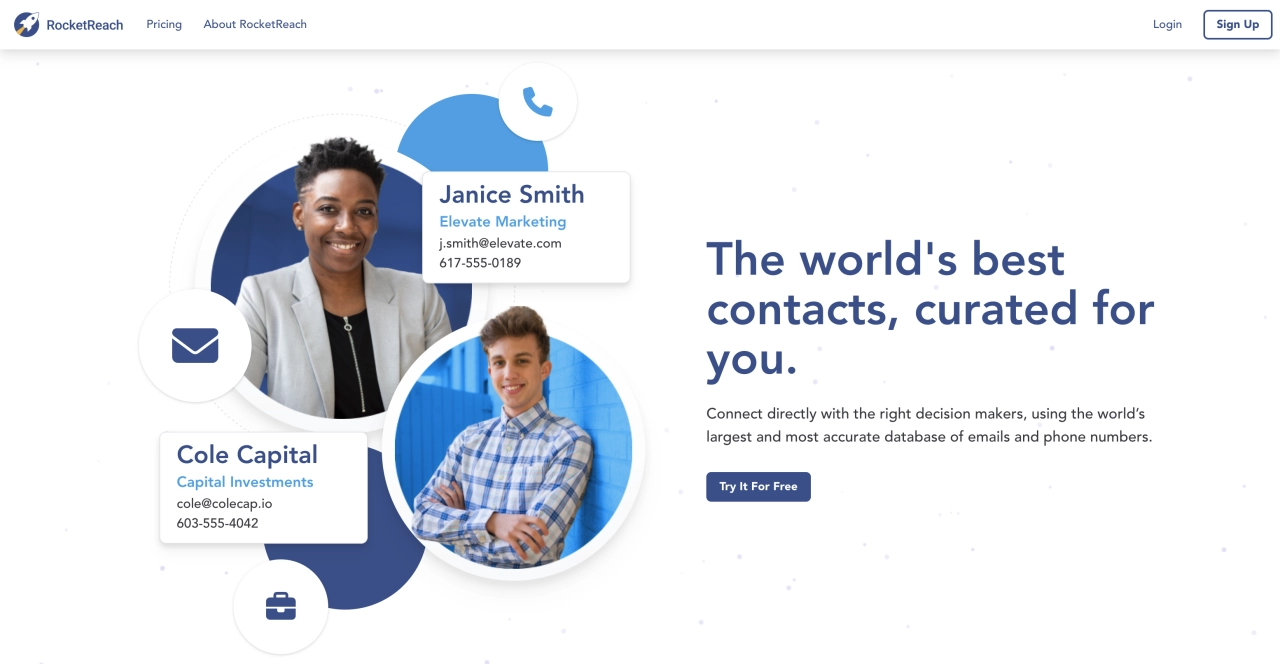
Also a very popular email-finding tool, RocketReach is designed to help you find and validate business email addresses quickly. They boast an impressive collection of clients, including Disney, Google, Amazon and 95% of the S&P 500. Plus, they have a free version and a Chrome extension to make things easy for those who want to try before committing to the paid version.
UpLead
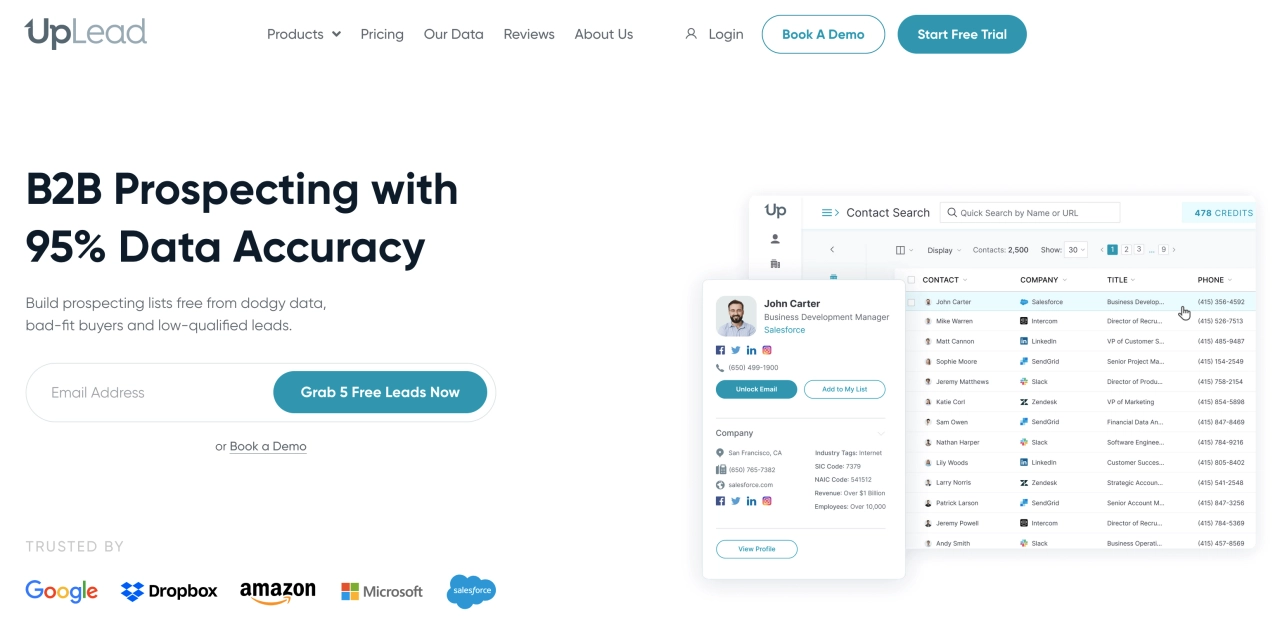
UpLead is a more advanced lead generation software in the email finder category. At a glance, it does what other email finders do, but it goes beyond that. Their main promise lies on data accuracy, which they guarantee by using only the most reliable sources of data. It also offers features such as technographics (finding leads based on the technology they use) and intent data, which can help your sales team build better, more targeted outreach campaigns.
Advertising tools
Although advertising tools are not lead generation software per se, they can be a great addition to any marketing and sales team’s tool stack. Done right and for the right industries, ads can be a cost-effective way to reach the right people, and though it may not always be easy to measure ROI directly, there’s no denying that paid campaigns can help you generate leads in a short period of time.
Here are some of the most popular advertising tools on the market.
Semrush
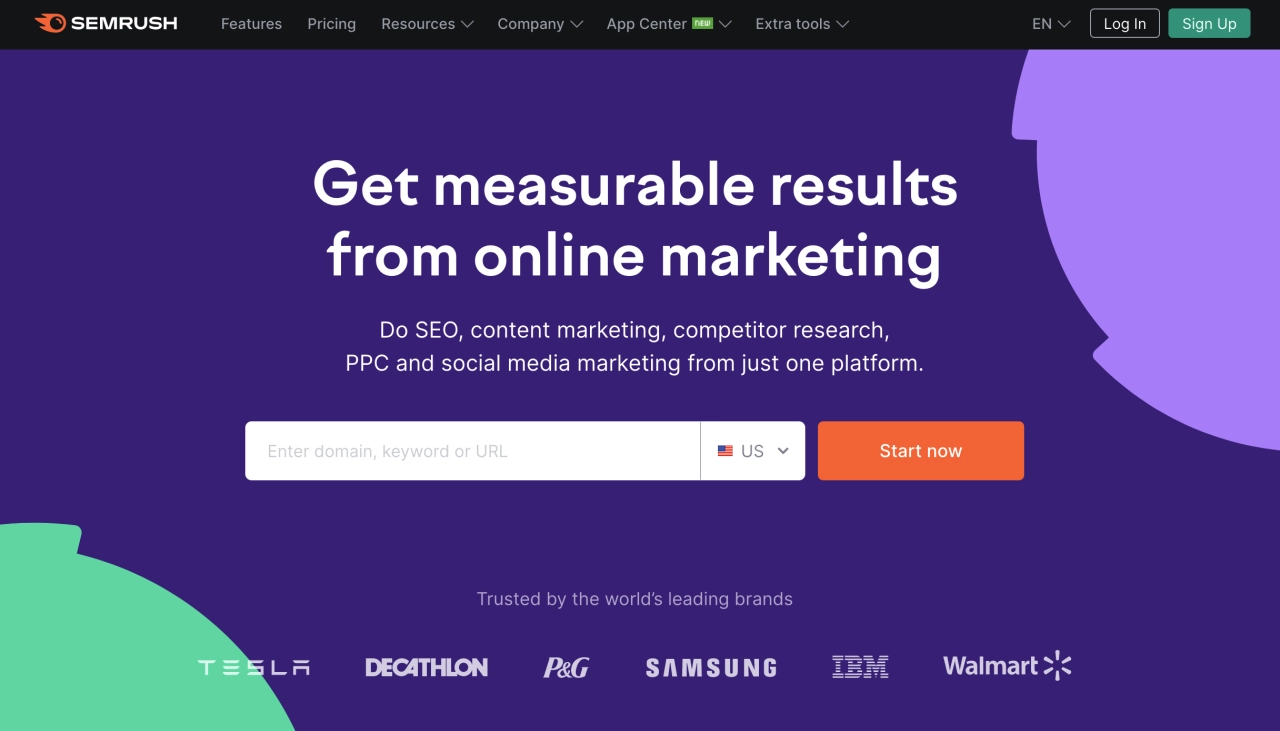
Although Semrush is largely known as an SEO tool, it also has some excellent features for running and optimizing paid campaigns. It provides you with keyword insights that can help you create targeted ads and content, as well as tools for monitoring your campaigns and competitor analysis.
This type of data helps you create better-targeted campaigns (and thus, increase your ROI).
AdEspresso
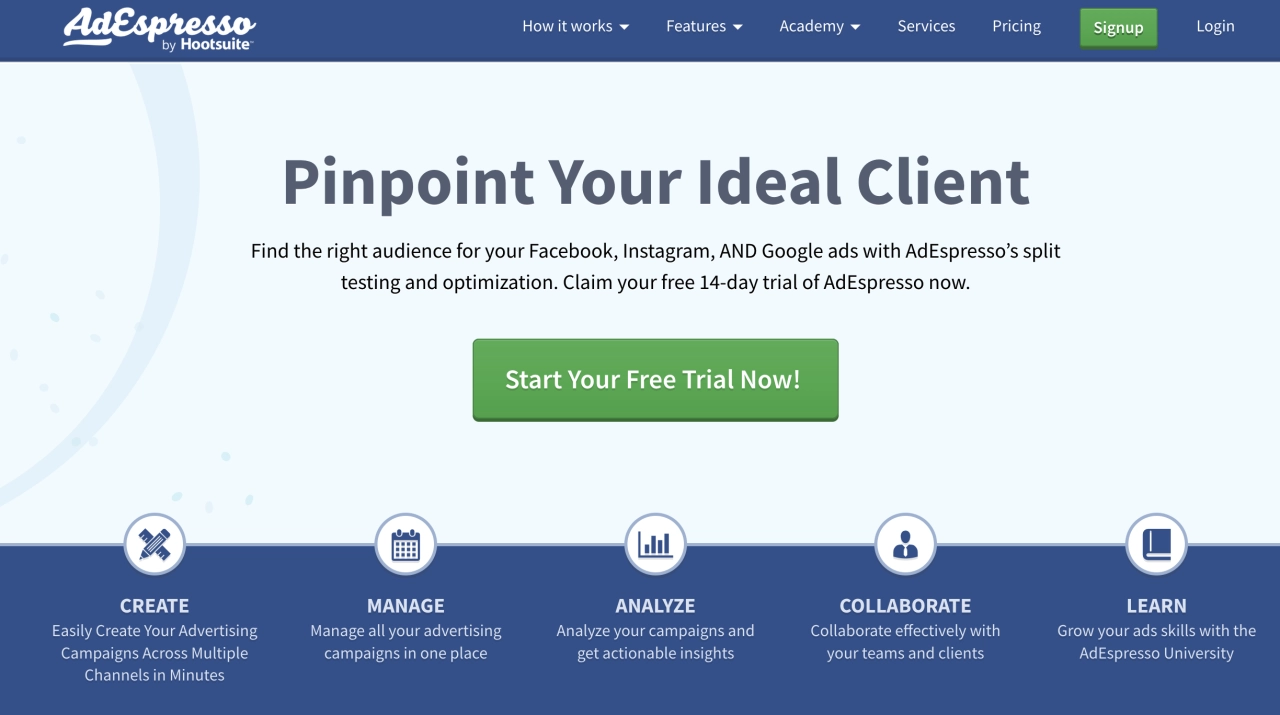
AdEspresso is a comprehensive all-in-one advertising platform for Facebook, Instagram, and Google. It helps advertisers research, create, and collaborate on advertising campaigns by providing them with automated optimization tools and real-time reporting. It also has analytics features that help you see the performance of your ads (and draw conclusions that help you improve it).
How to choose your lead generation software
There’s an abundance of lead management software you can choose from—but just because some of them sound attractive, it doesn’t necessarily mean they’re right for you and your specific agency’s lead generation challenges.
So, to make sure you pick the right lead generation tools and don’t waste your money (and time) on software that doesn’t actually improve your bottom line, consider the following tips.
Know what you need
Before you turn the market upside down, make sure you know what you actually need. As shown before, lead gen software comes in many shapes and sizes, so it’s essential for you to know what you need help with.
Some types of lead generation tools are a must (like a CRM, for example), but others are more optional—particularly if your agency isn’t investing that much money in a specific activity. For instance, if you don’t run a lot of PPC ads, advertising tools won’t make sense for you. Likewise, if your CRM already helps you handle client communication in the best way, you won’t need an extra chat feature.
Read reviews
This comes without saying, but online reviews can give you an idea of how good a product actually is.

Make sure you go beyond the site’s testimonial section: read reviews on social media, sites like G2, and dig even deeper by plunging into Reddit or Twitter threads to see what people say about your chosen tool.
Test it out
Ideally, when buying software, you want to have access to some sort of free trial or demo option. This will help you test the product, get familiar with its features and see if it’s really worth investing your time, money, and energy on.
Make sure the tool integrates with your other software
Integrations are key to any successful marketing and sales team. To maximize productivity, you want to ensure all your software works together—so don’t forget to check if the tool of your choice integrates with your existing tech stack.

Look for reliable customer support teams
No matter how brilliant or straightforward a software may be, issues can (and likely will) happen—and even if they don’t, you might have questions on how to use a specific product better. Before signing up, make sure you have access to reliable customer support teams who are available via email, chat, or phone.
Conclusion
Lead generation software is an invaluable help in finding, nurturing, and converting leads—but no matter how smart or AI-driven they may be, they’ll never replace good, old-fashioned rapport and genuine concern for helping your clients grow their businesses.
At the end of the day, using lead generation tools has grown to be an integral part of every sales team’s daily activities. However, crucial choosing the best lead generation software may be, though, be sure it helps you do something you can’t do on your own or by using manual processes. That way, you’ll get the most out of it and be able to focus on building those invaluable client relationships your agency relies on.

